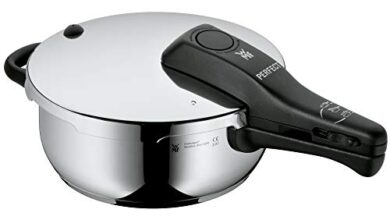What is inmotics and what are its benefits?

Smart home automation is not a matter of the future, but is part of the technologies of the present. For this reason, many of us know what home automation is, an increasingly common topic when building and remodeling homes. However, the concept of inmotics is less well known.
According to data from the Spanish Association of Domotics (CEDOM), only between 2017 and 2018 sales of control and automation systems increased by 40%, which means that more and more families decide to take the step towards a more modern lifestyle, comfortable, safe and, above all, energy efficient.
Home automation makes it possible to put heating to good use, but also to access smart plugs to safely turn off different devices, among which we can mention televisions, music players and video game consoles. In fact, the best PS4 controllers are compatible with Remote Play, to move easily and intelligently from the television to the screen of the mobile, tablet or laptop.
We are in an increasingly technological world and the percentage of smart homes is increasing rapidly in Spain, so it is worth reviewing whether this technological advance is also occurring in commercial and industrial establishments, as well as in public sector institutions. and private.
This is precisely what integral inmotics is all about: they are all those technologies that are used to control and automate buildings that are not intended for housing, such as hospitals, shopping centers, schools, hotels, universities and other tertiary buildings, with the aim of use energy more efficiently, as well as favor communication between users and the system, increase comfort, among other benefits.

What is immotics for?
Building automation uses systems called Building Automation and Control (BAC), that is, devices and technologies for the automatic control of buildings. In this way, it is possible to improve the operation of hot water, as well as lighting, heating, cooling, among other applications. This is positive from an ecological point of view, since it allows the configuration of complex and integrated routines for energy saving, based on the actual consumption of each building, thus reducing CO2 emissions.
All this also favors performance at a business and institutional level, since thanks to inmotics it is possible to have quick and easy access to information on building maintenance, services and security needs for the installation of alarms, cameras, detectors against fires, among others.
Differences between inmotics and home automation
We can say that home automation and building automation are actually compatible and complementary technologies, but they have some fundamental differences that we must point out. One of them is the scale of the system, each one has a certain scope, for example, while home automation can help control a series of low consumption electric radiators in the home, home automation has the capacity to automate a large centralized heating system.
In this sense, home automation works with compact actuators and sensors, such as Din rail modules, micromodules or WiFi plug modules, which can be installed in a house without having to carry out major works. In addition, visually they can go unnoticed, so they do not interfere with the decoration. However, when it comes to a larger space, such as a school or any large building, then it is necessary to turn to inmotic systems, since larger devices are necessary, which due to their size need to be in specific spaces. such as a machine room.
Another difference between domotic and inmotic systems is accessibility. Access to home automation devices is very simple, any member of the family can make changes to the system. However, in the case of home automation, it is generally necessary to have prior authorization to access the electrical control panels, since the safety of many people could be endangered.

Installation of an inmotics system
Home automation systems can be of different types and therefore the installation varies. There are wireless with WiFi, PLC, infrared and Bluetooth technology, but there are also wired ones. In reality, they are similar to home automation systems, but in the case of home automation there are two main installation architectures; distributed and centralized. Since it is a building, the interconnected wired system and a few secondary wireless control systems are used more.
Although there are basic security protocols in home automation, in the case of inmotic systems, greater attention should be paid to the protection of automated systems, since the risk is higher and the loss of information can be significant, to the point of causing occupational accidents.
On the contrary, in home automation, practicality is given priority, for this reason, the implementation of the WiFi network is more popular to control all possible devices, including televisions, lights, air conditioners, plugs, players, etc. Therefore, the wired system is less and less used in houses and is more useful in smart buildings.
Building automation costs
Although it is true that building automation allows consumption to be managed and processes to be improved to save resources, it is also true that it requires a considerable investment depending on the building’s automation needs. In general, it is estimated that a basic system can be between 20,000 and 50,000 euros, calculating a space of 300 to 500 m2.
In addition, in some cases it is cheaper to implement a building automation system in a new building designed for smart technology, while retrofitting an old building can be more expensive. However, as has happened with other technologies, it is expected that over time it will become more affordable.



